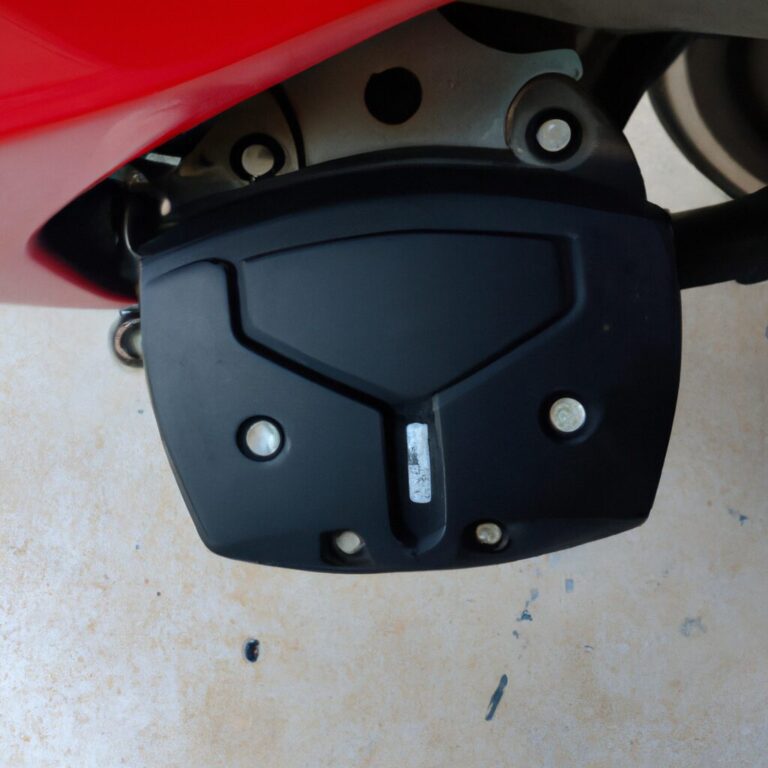How to Find a Hole in a Tire
To find a hole in a tire, mix soap and water, then apply to the tire and look for bubbles forming. Searching for a hole in a tire can be crucial in preventing a flat tire while driving.
It’s important to quickly identify and repair any leaks to ensure safety on the road. By following simple steps using soapy water, you can easily pinpoint the location of the hole. In this guide, we will explore effective methods to find and fix a hole in a tire, saving you time and money in the long run.
Let’s delve into the process of detecting and repairing tire punctures so you can hit the road worry-free.

Credit: m.youtube.com
Signs Of A Tire Hole
Recognizing the signs of a tire hole is crucial for maintaining vehicle safety. Whether it’s a small puncture or a larger gash, identifying a tire hole promptly can prevent potential accidents and costly repairs. By paying attention to visual cues and changes in air pressure, you can effectively uncover potential tire holes.
Visual Inspection
Performing a visual inspection is the first step in identifying a tire hole. Look for any visible punctures, cuts, or bulges on the tire’s surface. Check the tread and sidewalls thoroughly for any foreign objects, such as nails, glass, or sharp debris that may have caused the damage. Examining the tire in good lighting can help in spotting even minor imperfections.
Loss Of Air Pressure
One of the primary indicators of a tire hole is a sudden or gradual loss of air pressure. Regularly monitor your vehicle’s tire pressure using a gauge and compare the reading against the recommended pressure levels provided by the manufacturer. If you notice a significant drop in pressure without any apparent cause, it could point to a potential tire hole.
Preparing For Tire Inspection
Gather Necessary Tools: Before inspecting your tire, ensure you have a jack, lug wrench, tire pressure gauge, and soapy water.
Park in a Safe Area: Find a level surface away from traffic to safely assess your tire for any damage.
Methods To Locate The Hole
Start of blog post section about Methods to Locate the Hole in a TireSubmerging In Water
Submerge the inflated tire in water to locate the air bubbles escaping from the puncture.
Using Soapy Water
Apply soapy water to the tire’s surface and look for bubbles forming at the site of the leak.
Using A Tire Pressure Gauge
Check the tire’s pressure using a gauge to identify a sudden drop that indicates a puncture.
End of blog post section about Methods to Locate the Hole in a Tire
Credit: www.wikihow.com
Repair Or Replace
When it comes to a damaged tire, the decision to repair or replace it can often be a tricky one. Assessing the extent of the damage, along with considering safety and cost-effectiveness, will help you determine the best course of action. Let’s delve into the process of finding a hole in your tire and the options available: repair or replace.
Assessing Tire Damage
To determine if your tire can be repaired or needs to be replaced, start by inspecting the tire for any visible signs of damage. This includes looking for small punctures, nails, screws, or any objects lodged in the tire tread. Additionally, check if the tire is losing air pressure, which can indicate a leak.
Repairing The Hole
If the hole in the tire is small and located in the tread area, it may be possible to repair it. Using a tire repair kit, carefully follow the manufacturer’s instructions to patch the hole. It’s crucial to ensure that the repair is done correctly to maintain the safety and integrity of the tire.
Replacing The Tire
If the tire damage is extensive, such as a large puncture or sidewall damage, replacing the tire might be the safest option. Additionally, if the tread depth is low and the tire is nearing the end of its lifespan, it’s advisable to opt for a replacement to maintain optimal safety and performance. When replacing the tire, consider factors such as the tread design, tire size, and your driving needs to select the most suitable replacement.
Preventive Measures
Taking preventive measures can help you avoid potential tire problems and extend the lifespan of your tires. Regular tire maintenance and avoiding road hazards play a crucial role in ensuring your tires are in good shape. Let’s explore each of these preventive measures in more detail:
Regular Tire Maintenance
Regular tire maintenance is essential to keep your tires in optimal condition. By following these simple steps, you can prevent unexpected tire issues:
- Check tire pressure every month and maintain the recommended air pressure level specified by the manufacturer.
- Inspect tires for any visible signs of damage, such as cuts, bulges, or uneven wear patterns.
- Rotate your tires regularly to ensure even tread wear and improve their longevity.
- Keep an eye on tire tread depth and replace tires when the tread wears down to the recommended level.
- Ensure proper wheel alignment and balancing, as misalignment can cause uneven wearing of the tires.
Avoiding Road Hazards
While it’s not always possible to avoid road hazards entirely, being cautious can significantly reduce the risk of tire damage. Here are some tips to keep in mind:
- Scan the road ahead and watch out for potholes, sharp objects, or debris that could potentially puncture your tires.
- Drive at a safe speed to give yourself enough time to react to any unexpected obstacles.
- Maintain a safe distance from the vehicle in front of you to avoid sudden braking or swerving.
- Take extra care when driving on rough or uneven surfaces, as they can put additional stress on your tires.
By taking these preventive measures, you can minimize the chances of finding a hole in your tire and ensure a smoother and safer driving experience. Remember, prevention is always better than a costly repair or replacement.

Credit: www.wikihow.com
Frequently Asked Questions Of How To Find A Hole In A Tire
How Do You Find A Slow Leak In A Tire?
To find a slow leak in a tire, you can start by visually inspecting the tire for any punctures, cracks, or bulges. Then, use soapy water to carefully check the valve stem, bead, and tread area for any bubbles, which indicate leakage.
Also, listen for any hissing sounds near the tire.
How Do You Check For A Puncture In A Tire?
To check for a puncture in a tire, visually inspect for any nails, screws, or other sharp objects. Next, listen for any hissing sounds that may indicate air leaking. Finally, use soapy water to identify any air bubbles forming, which pinpoint the location of the puncture.
How Do You Find A Hole In A Tire With Soapy Water?
To find a hole in a tire with soapy water, inflate the tire, apply soapy water, and look for bubbles indicating the leak.
Why Is My Tire Losing Air But No Hole?
Your tire may be losing air due to a faulty valve stem, corroded rim, or wheel bead leak.
How Do You Find A Hole In A Tire?
To find a hole in a tire, you can perform a visual inspection or use the water dunk test to locate the air leak.
What Causes A Hole In A Tire?
Common causes of holes in tires include punctures from nails, screws, or sharp objects, as well as damage from road debris or worn-out tread.
Can You Repair A Hole In A Tire?
Yes, small holes in a tire can often be repaired with a patch or plug. However, larger or sidewall damage may require tire replacement.
Conclusion
Finding a hole in a tire is crucial for maintaining safety and efficiency on the road. By employing the step-by-step methods outlined in this blog post, you can easily identify and repair any tire damage. Regular inspection and prompt action can ultimately save you time, money, and potential accidents.
Ensure your vehicle’s tires are in top shape to enjoy a smooth and worry-free journey.



